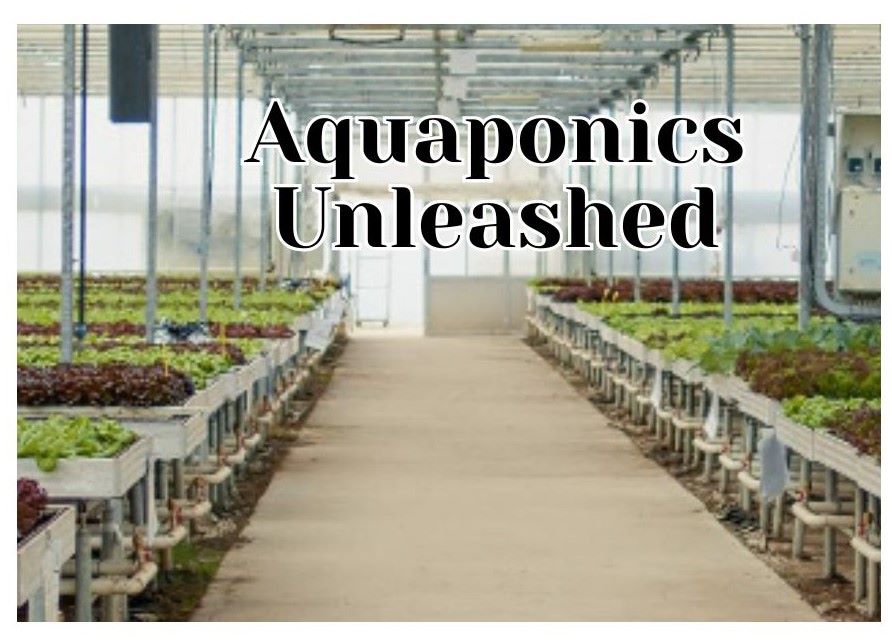
Aquaponics in India: A Comprehensive Guide to Sustainable Farming and Income Generation
The integration of aquaculture (fish farming) and hydroponics (soil-less plant growth), known as aquaponics, is gaining significant momentum in India. This innovative agricultural method offers a host of benefits, including increased yields, water conservation, organic produce, and a reduced environmental impact. For Indian farmers and aspiring entrepreneurs, aquaponics presents a promising avenue for sustainable and profitable farming.
Establishing Your Aquaponic System:
- Strategic Planning: Begin by researching various aquaponic systems such as NFT, DWC, and media-based, selecting one that suits your space, budget, and crop preferences. Consider factors like sunlight availability, water source, and the compatibility of fish species with chosen plants.
- Material Acquisition: Gather essential materials like fish tanks, grow beds, pumps, filters, and a suitable growing medium, such as gravel or clay pellets. Consider repurposing old materials or sourcing from local suppliers.
- Fish Selection: Choose fish species that thrive in aquaponic systems and are suitable for local markets. Popular options include Tilapia, catfish, and carp. Start with a small number and gradually increase as your system matures.
- Plant Variety: Select plants that complement the fish and thrive in aquaponic conditions. Leafy greens, herbs, and certain fruits like tomatoes and peppers are well-suited for this environment.
- Initiating the Cycle: Fill your system with water, introduce your chosen fish, and plant seedlings. Regularly monitor water quality, pH levels, and nutrient balance. Success in aquaponics requires patience and vigilant observation.
Resources for Aspiring Aquaponic Farmers:
- Government Initiatives: The Indian government actively promotes aquaponics through initiatives like the National Mission on Sustainable Agriculture (NMSA) and Skill India. These programs offer subsidies, training, and technical assistance.
- NGOs and Research Institutions: Organizations like ICAR, CIFE, and various state-level agriculture departments provide valuable resources, workshops, and demonstrations for aquaponics enthusiasts.
- Online Communities: Connect with fellow aquaponic farmers in India through platforms like Facebook groups, online forums, and dedicated websites. Share experiences, ask questions, and learn from each other’s successes and challenges.
The necessary investment hinges on the size and intricacy of your setup. Here’s a projected breakdown to help navigate the initial costs:
Initial Setup:
- Tanks and Grow Beds: Rs. 10,000 – Rs. 20,000
- Pumps and Filters: Rs. 5,000 – Rs. 10,000
- Growing Medium (Gravel, Clay Pellets): Rs. 2,000 – Rs. 5,000
- Fish and Fish Food: Rs. 3,000 – Rs. 5,000
- Seeds and Seedlings: Rs. 1,000 – Rs. 2,000
- Miscellaneous (Hoses, Tools, etc.): Rs. 2,000 – Rs. 5,000
Total Estimated Initial Cost: Rs. 23,000 – Rs. 47,000
It’s important to note that these figures are approximations. Actual expenses may differ based on material choices and sourcing. Consider repurposing materials or crafting your equipment to reduce costs.
Aquaponics offers multiple income streams:
- Sell Fresh, Organic Produce: Capitalize on the increasing demand for chemical-free, locally grown food by targeting high-end restaurants, organic stores, and farmers’ markets.
- Fish Sales: Harvest and sell fish directly or to restaurants, choosing species with high market demand. Consider value-added products like smoked fish or fish roe.
- Aquaponic Consultancy and Training: Share your expertise with aspiring aquaponic farmers by offering setup consultations, workshops, or online courses. This can serve as a lucrative side hustle or even a full-time business.
- Organic Fertilizer Production: The nutrient-rich water from your fish tank can be bottled and sold as organic fertilizer for conventional gardens and farms.
Potential Income:
The revenue from aquaponics farming varies based on factors like produce type, market reach, and fish species. Here’s a general income breakdown:
- Leafy Greens: Rs. 50 – Rs. 100 per kg
- Herbs: Rs. 100 – Rs. 200 per bundle
- Fish: Rs. 200 – Rs. 300 per kg
With efficient management and a focus on high-value crops, a small-scale aquaponics setup has the potential to yield Rs. 50,000 – Rs. 1,00,000 annually. As your farm expands and experience grows, income potential can significantly increase.
Remember, aquaponics isn’t just about immediate profits; it’s about building a sustainable, eco-friendly farming system. The long-term advantages of clean water use, waste reduction, and organic food production are invaluable for your business and the planet.
Embracing the Future of Farming:
Aquaponics is more than just a farming technique; it’s a philosophy of sustainable living. By adopting this circular system, you contribute to a healthier environment while creating a profitable and rewarding venture. Take the leap into aquaponics, explore available resources, and witness your aquaponic oasis flourish in the heart of India.
Remember, aquaponics is a journey, not a destination. While challenges and learning curves are inevitable, the rewards of fresh produce, content fish, and a sustainable income make the effort worthwhile. Dive in, get your hands dirty, and let India’s aquaponic revolution begin!
